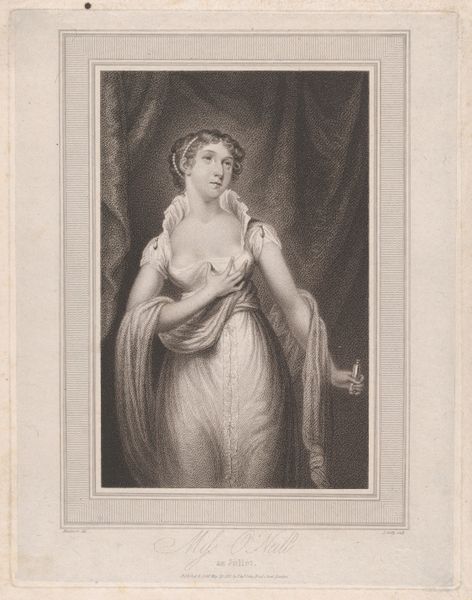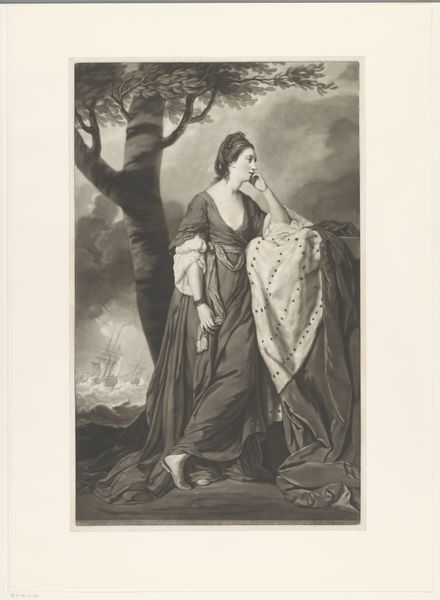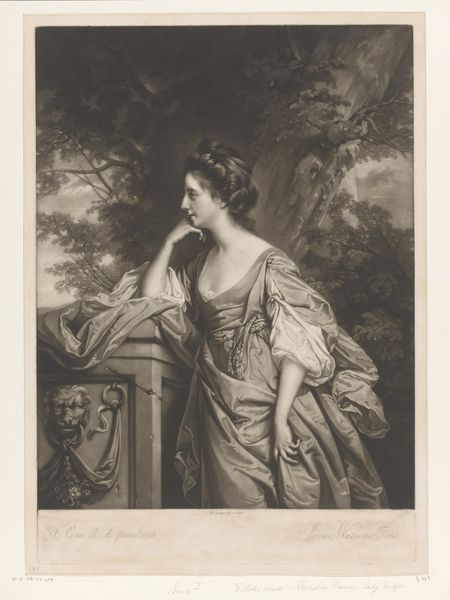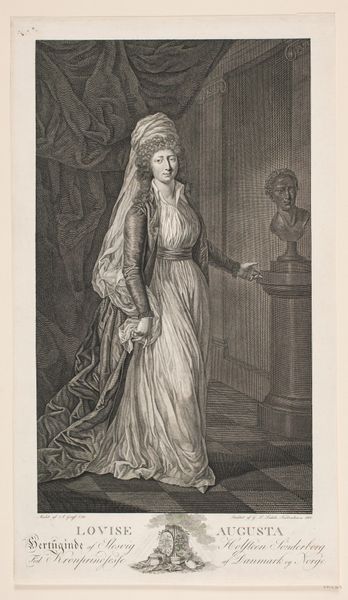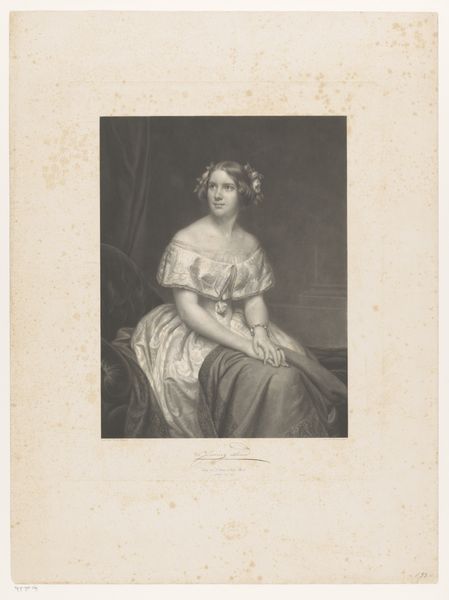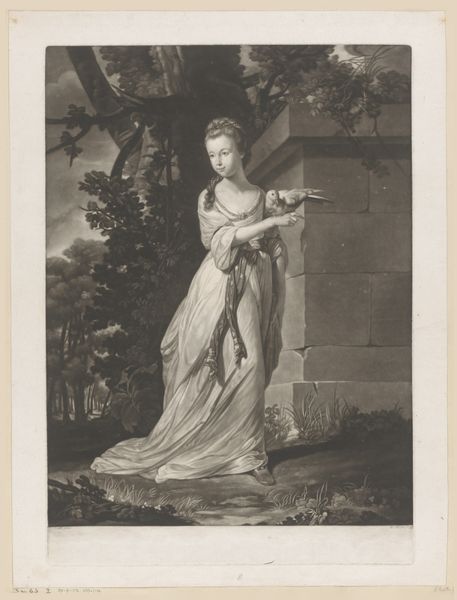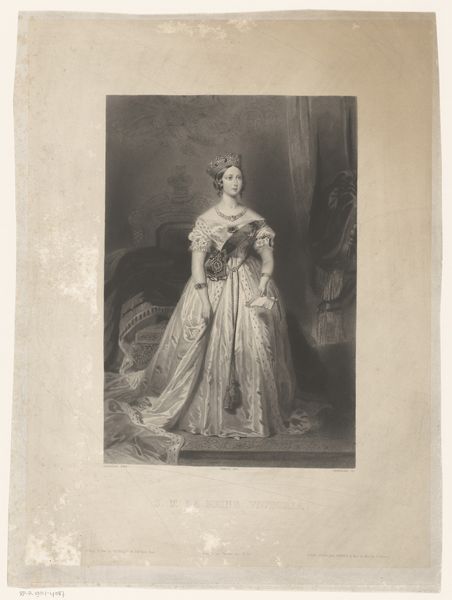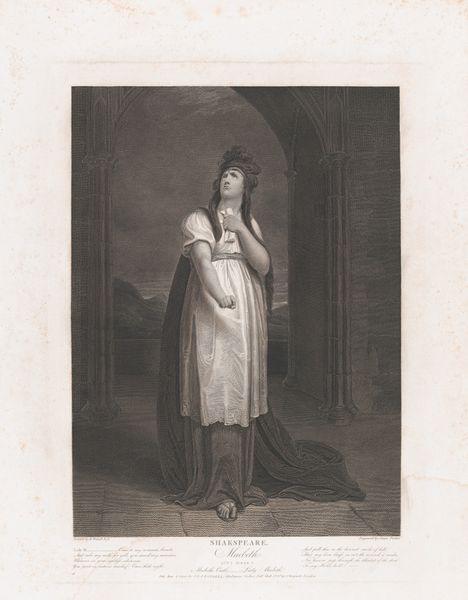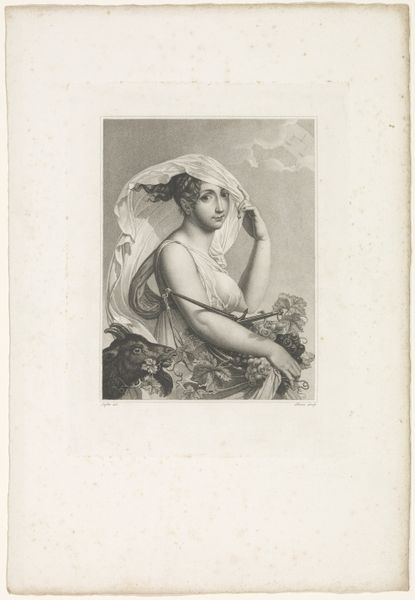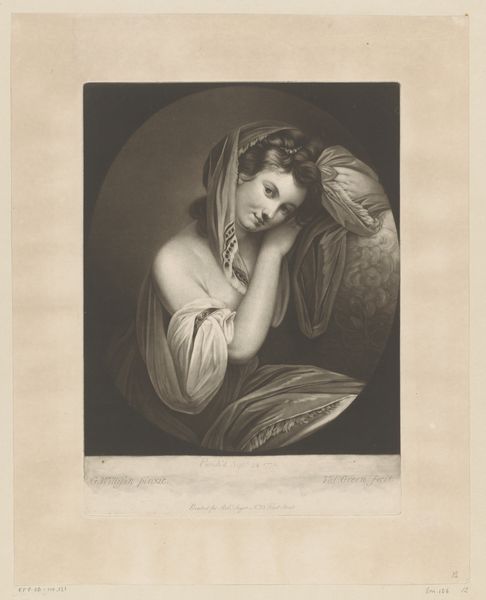
Cassandra Raving (Shakespeare, Troilus and Cressida, Act 2, Scene 2) 1795 - 1852
0:00
0:00
drawing, print, engraving
#
drawing
#
neoclacissism
# print
#
landscape
#
figuration
#
history-painting
#
engraving
Dimensions: Plate: 22 9/16 × 16 1/16 in. (57.3 × 40.8 cm) Sheet: 27 13/16 × 21 15/16 in. (70.7 × 55.8 cm)
Copyright: Public Domain
Editor: Here we have Francis Legat's engraving, "Cassandra Raving" from 1795-1852, illustrating Shakespeare's "Troilus and Cressida." The figure of Cassandra is so striking; her pose is dramatic, yet her expression feels almost vacant. How do you interpret this work? Curator: This engraving, situated within Neoclassicism, provides a powerful lens through which to view the silencing of marginalized voices. Cassandra, the prophetess cursed to be disbelieved, becomes a potent symbol. Consider the context: late 18th century, burgeoning patriarchal structures. How does Legat visually represent Cassandra's powerlessness despite her knowledge? Is she truly raving, or is this a portrayal of a woman whose truth is simply unwelcome? Editor: I hadn’t thought of it that way. The classical style initially made me think of grand narratives and heroism, not powerlessness. Is that why she holds the axe? As a rejected symbol? Curator: Precisely! What does it mean to wield a weapon and still be powerless? To hold the tools of destruction while being unable to change the course of events? Look at her drapery, clinging yet restrictive; this creates a tension. In considering this, are we also examining how women’s knowledge and insights are dismissed in favor of male authority? Editor: That really changes my perspective. So, her supposed madness is perhaps a reflection of societal unwillingness to listen to marginalized perspectives? Curator: Exactly. Legat's "Cassandra Raving" challenges us to examine not just the individual, but the system that silences her. The art asks that we give value to experiences discounted as 'mad.' Editor: I’m glad you pointed that out; I was really stuck on the classicism, the aesthetic of it all. This engraving pushes past appearances to say much more! Curator: And hopefully, this discussion reminds us to continually question dominant narratives within both historical and contemporary contexts.
Comments
No comments
Be the first to comment and join the conversation on the ultimate creative platform.
